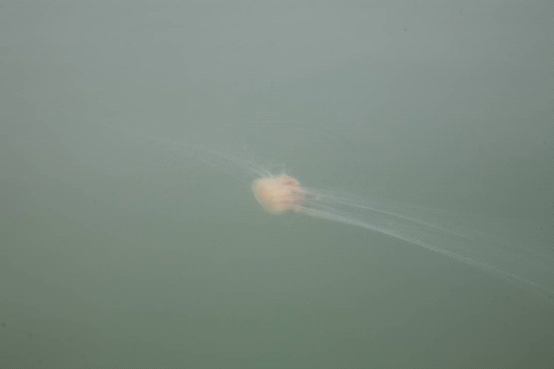In July, the team of the jellyfish “973” project found that a large number of large jellyfish appeared in the coastal waters of Qingdao, including the species of Nemopilema nomurai, Aurelia aurita, Cyanea nozaki, which were also three typical large jellyfish species in China’s coastal waters. Until late July, 2011, the umbrella diameter of one individual of Nemopilema nomurai reached 1.2 meters, weighing more than 100 kg. This fact indicated that the prediction of the Japanese scientist “2011 is non-jellyfish year” was probably not correct.
The reasons leading to the dramatic increases in jellyfish in the sea and its economic, social, and ecological effects caused widespread concern. Focusing on this problem, the staffs of 《Approaching Science》of CCTV-10 made a special trip to the Qingdao jellyfish blooming area and the research base of the jellyfish “973” project in July 19-24, recording a program of the jellyfish bloom.
For the growing phenomenon of the large jellyfish bloom, the team of the jellyfish “973” project has organized a series of special cruises. On one hand, they are conducting intensive observations of jellyfish bloom in Qingdao coastal waters, on the other hand, the scientists will go to the Yellow Sea and the East China Sea to carry out multi-disciplinary field observations, combining with the data of this spring and the historical field data, to study the ecological distribution of jellyfish and to reveal the key processes and the ecological effects jellyfish bloom. At the same time, the scientists will simultaneously carry out a series of ecological controlled experiments on different scales, in order to reveal the key processes, mechanisms and ecological effects of jellyfish blooms from different levels of laboratory - enclosure – field.

Nemopilema nomurai in Qingdao coastal waters

Cyanea nozaki in Qingdao coastal waters

Large jellyfish obtained from trawling

The Chief Scientist of the Jellyfish “973” Project, Sun Song, was interviewed by the CCTV-10 “Approaching Science” staff
|
|

Address: 7 Nanhai Road, Qingdao, Shandong 266071, China
Tel: 86-532-82898902 Fax: 86-532-82898612 E-mail: iocas@qdio.ac.cn


